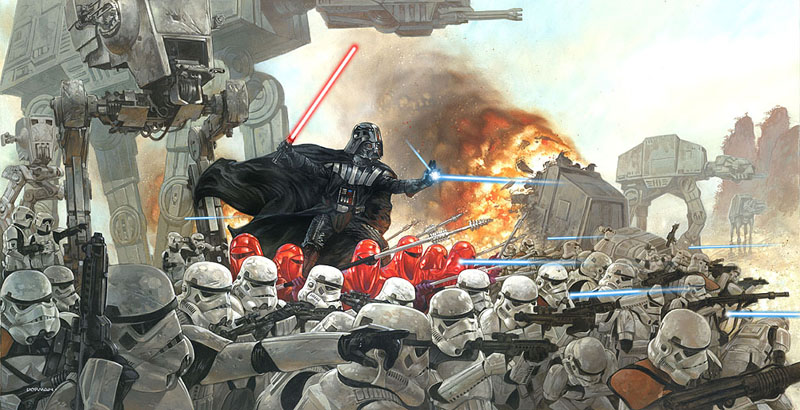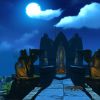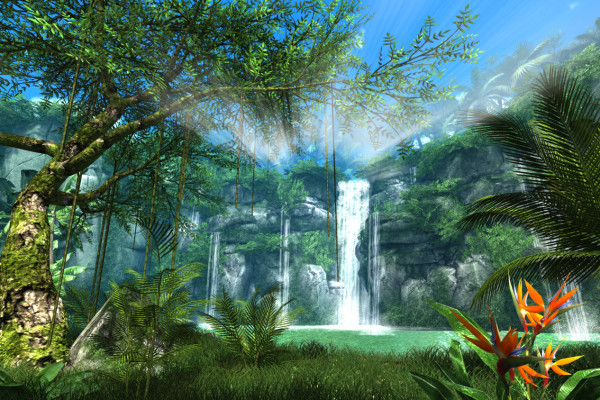I’m invincible. I can do anything I want and no one bothers me. Ha!
Being an outcast is who I am. People don’t like it? Fuck them!
That’s what I thought as a kid.
I wanted to be the Hulk. Now that I think about it, maybe that’s why my favourite color is green.
What about you? What superhero did you want to be?
Spiderman, Superman, Wonderwoman, Batman?
And what about today? Want to do epic shit?
Deep down, we all want to be superheroes. But then, we quickly rationalise why we can’t be one.
Now, have you ever considered being an entrepreneur superhero? Have you thought about bringing your dreams to reality? Or… Virtual Reality?
What if you could create anything you wanted and share it with the world? This is the promise of VR. It’s a unique opportunity. One you’ll want to be part of.
So, maybe you’ve been dying to build VR apps and experiences. But didn’t know where to start. And you didn’t feel you had the right superpowers to make a dent in the universe?
Let’s imagine you could acquire these superpowers. Or you had access to an infinite pool of superpowers you could draw from. What would you accomplish then? What would you make?
Here’s the best part: I want to help you on the way to your epic feats. I want to show you how you can build a strong plan that will lead you all the way there.
Today, we’ll see how you can create VR apps and experiences, even if you don’t know anything about game development (which was my case not long ago). Or even if you don’t have a technical background (not my case, but I can still help).
Let’s get started.
- Back to basics
In a VR experience, at the minimum, you need an interface the user can use to access the experience.
The most simplistic one is a graphical user interface (GUI) that acts as a remote control. A common example is a GUI for a VR video experience. The user can play, stop, pause, rewind the video, …
In a more traditional experience, you’ll have a 3D world (it might just be a single room) and objects or people the user can interact with.
And what are the basic elements, the building blocks of that experience?
At a technical level, you have:
- Scripts: software code that defines the behavior of each element of the world
- 3D models: they embody the elements of the world (e.g. the room, a table, people, a graphical interface)
- Audio: sounds, speech and music
- Animations
If that scares you, there’s good news: you don’t need to master each area. There’s plenty of tools, asset libraries and people to help you out. We’ll cover that later in this article.
What’s important for now is to understand the basic elements of the experience and what they bring to it. The key to the whole experience is how you design it.
How does it look and feel? How does it progresses? Is there a story, a chronology to the experience? Or does the user create his/her own story?
These questions are the ones you must define and understand as a VR creator. As for the other elements, how deeply you want to be involved in each of them is up to you.
Now that we’ve reduced the experience to its basic elements, it’s time to see where you stand.
- Your stand
All superheros have superpowers… and weaknesses.
What are yours?
If you’re reading this, you’re interested in VR. What led you to that interest? Are you a gamer? An artist? A geek?
Taking a stand, knowing your strengths, weaknesses and skills is a key starting point in your journey.
So, take the time to list your strengths. Make a list of 10.
Then, list your weaknesses. Another list of 10.
Finally, list your skills. A final list of 10.
Now, look at your skills and strengths. How can you leverage them for VR creation?
If you’re skilled in programming, there’s a direct link to writing scripts here. If you’re an artist or if you can draw, you’ll be good at sketching what the world and experience look like. You can also get started in 3D modelling pretty quickly.
If you’re a gamer, you’ll have a good vision of what is a good user experience. And you might also be technically inclined. Which means you’ll quickly get the grasp of the different tools that are used for VR creation.
Depending on your background, the link to VR might not be obvious. So, take the time to dig deeper. Find what part of the overall creation you’ll be good at handling yourself.
Then, look at your weaknesses. What do they tell you? If you’re hopeless at math, you might have challenges with advanced scripting. If you’re bad at drawing, like me, the graphics creation part might not be your forte.
Know your limitations and how they relate to the whole VR creation. So you’ll know where you need help. We’ll get into that later.
Make sure you’re clear on your superpowers and weaknesses. Once you are, you’re ready to move on.
- Where are you going?
So, you’ve got your starting point. But, do you know your destination?
Do you want to create a VR game? Or a VR experience, like exploring a galleon under water? Maybe you want to focus on education and create a VR course?
Right now, you don’t need a precise description of your destination. But the more details you can add, the better.
- Lead the Way
Time to map your route from start to finish. We need to put a plan together.
How do you do it?
Start from the end goal. Then, decompose it separate parts.
Let’s use an example. Say you want to create a course that teaches kids medieval history through an interactive 3D world.
To illustrate the planning process, here’s one option for implementation. There are others.
Here are the parts you’ll need for your final product:
- A VR world kids can navigate around
- Interactive elements in the world
- Animated people and scripted events to teach kids history
- Sound, speech and music
- Optional: A graphical interface to start the experience
- Tests, so you can debug your product and make sure it’s robust before you release it
You’ll notice that we go back to the basic building blocks I mentioned earlier.
Now that you’ve got your separate parts, you need to take each one and reverse-engineer it. Ask yourself: what are the milestones you need to meet along the way to get your final part done?
If we take the first part in our example, you’ll need:
- 3D models of all the major elements of the world
- A control interface so kids can look and walk around
- A 3D engine (game engine) that handles all the physics of the world
Part 3 is straight forward. You can use an engine like Unity to handle most of the heavy lifting.
Part 2 is also relatively straight forward. Depending on the VR platform you’re targeting (e.g. Oculus Rift, HTC Vive, Playstation VR, GearVR or Google Cardboard), you can import ready-made scripts that will handle the controls. But you’ll have to setup controls for walking on some platforms.
So for part 2, milestones will be:
- Import and implement controls for looking around
- Set up controls for motion
- Test controls
Part 1 is where the meat is.
Milestones are:
- Sketch your VR world
- List all the elements of your world
- Model each element in a 3D modelling tool (e.g. Blender, 3DS Max, Maya)
- Import each element in your 3D engine tool (e.g. Unity, Unreal Engine)
- Place the elements around the world and apply textures
- Test the environment
Now that you have a rough plan, analyze the skills you need to master to meet your milestones. What will you be outsourcing or purchasing to help you along? Go back to your strengths and weaknesses to help you decide.
You can do everything yourself. But it will take time. Especially if you’re a beginner.
If you want to go faster, you should consider purchasing some assets, like 3D models. You can get them on the Unity Asset Store, for example.
Also, you can outsource some of the work or get a partner with the right skills for your venture. If you want to outsource, there are freelancing platforms around that make the process easy and cheap (Freelancer, Upwork, Elance).
Your goal is to form a kind of “Justice League” around you so you can accomplish your epic feat.
Once you’re clear about what you’ll handle yourself and what you’ll purchase or outsource, put some deadlines for each of your milestones.
Congratulations, you now have a plan that will lead you all the way to having a finished VR app!
- Stand out
Sorry, but I need to be brutally honest.
If you don’t have a background in game development and you’re not a programming wizard, you’ll have a tough time making your app a success.
But, there’s also good news… There are hacks to get ahead.
To do so, you’ll have to be creative and come up with an original app.
Because VR is still new, it’s easier to stand out. Like when the App Store started. But that doesn’t mean you can come up with any old thing and be successful.
So, how do you stand out?
You need to take risks, go against the grain and bring surprises. To cultivate your originality, here’s 3 practices I use that can help you:
- Generate 10 ideas a day on different topics
- Practice brainstorming every week
- Read books in different fields
Being original means breaking the mold. So, challenge habits and common wisdom! VR is a new medium, feel free to create a unique experience. And why not, you can even create a new genre?
Bring your unique background and experience, your story, to the experience. Deliver something authentic. That will help you stand out.
- KISS
When you’re creating a unique experience, one key component to your success is to stay focused.
Focus on the essence of your experience and on its emotional aspect. Reduce it to the minimum. As they say: Keep It Simple Stupid (KISS):
- Create a “will not include” list: write down all the elements you will not include in the first version of your app
- Keep the controls as simple and intuitive as possible
- Spend time on your story (or storyboard)
Reducing your experience to its essence will save you a lot of development time and cost. And it will make your app more neat and straight-forward.
Create what we call a minimum viable product (MVP). Get it out there, get people to use it. Get feedback and then, only then, incrementally improve your product.
Just one thing to keep in mind: making it simple doesn’t mean being lazy. Keep the richness of the experience. As Einstein said: “Everything should be made as simple as possible. But not simpler.”
By keeping things simple, you can focus on making an impact, on smashing things!
- Get Help
In this journey, you’re not alone. There’s plenty of help around. I’m here for a start…
As I mentioned earlier, you can outsource (or crowdsource) some tasks to experts. And you can purchase specific assets.
But there’s also a community of developers. There’s online courses and video tutorials that can teach you the right skills. Also, there are books.
Here’s some links to essential resources, so you can learn and get the help you need:
Courses
- Build a Game Using Unity 3D (You can take the free option)
- Create Imaginative Games (You can take the free option)
- Learn to code by making games (Check for discount codes before taking the course)
- Make VR games in Unity with C# (Check for discount codes before taking the course)
- Learn 3D modelling (Check for discount codes before taking the course)
- Outsource your idea (Check for discount codes before taking the course)
- Unity 3D Student
Books
Free resources
- Unity website, community & Wiki
- Youtube (search for tutorials for Unity, Blender, etc.). Examples of channels: Brackeys videos (Unity) & Tutor4u (Blender)
- Quora
- Reddit (search subreddits, like Unity 3D and Blender 3D)
- GitHub
Assets
- Unity Asset Store
- https://www.freesound.org/ (sounds)
- http://soundbible.com/ (sounds)
- https://www.audioblocks.com/ (sounds)
- http://audiosoundclips.com/ (sounds)
- http://tf3dm.com/ (3D models)
- https://www.cgtrader.com/free-3d-models (3D models)
- http://www.turbosquid.com/ (3D models)
Of course, there’s more. Google is your friend here.
- It’s Hard
I said it already. It’s going to be hard work. You’ll have to learn the right skills and cultivate the right habits to be successful.
But if you’re passionate and you have a clear goal in sight, you’ll be able to come up with brilliant VR experiences.
Be ready to work hard. Focus on learning the right skills and build your knowledge. Understand how scripting and 3D modelling works. Get to know the basic maths that are involved.
You’ll then be well on your way towards your goal.
Step Into The Light
You have a journey ahead of you. It can be daunting sometimes. But it’s also exciting.
Take your excitement and use it to drive you forward.
I, like many other, am looking forward to using your great app!
So, what VR experience are you going to create? Share your thoughts in the comment section below.
And when you join, you get a FREE guide: 8 Tools & Resources Every New VR Creator Needs, so you can start building your first product today











Please share your comments